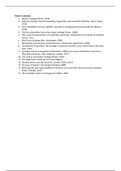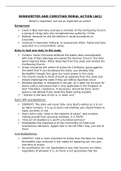Samenvatting
Samenvatting papers Strategic & Organisational Design
Samenvatting alle papers leerjaar vak Strategic & Organizational Design. 1. What is strategy (Porter, 1996) 2. Business strategy, financial reporting irregularities and audit effort (Bentley, Omer, Sharp, 2013) 3. Core capabilities and core rigidities: paradox in managing product development (Ba...
[Meer zien]





